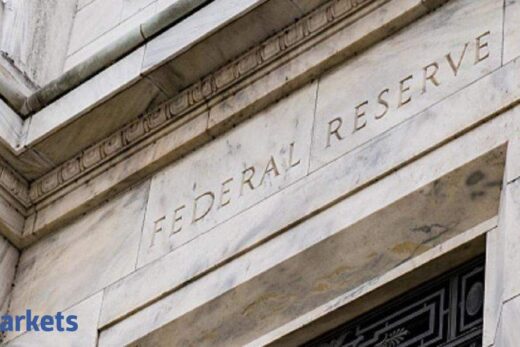The announcement brought to an end months of speculation about the bank’s plan for the bond-buying programme, and removed some unease among traders who were concerned that officials were leaving it too late to respond to rocketing inflation.
The Fed is the latest bank to move away from its emergency measures and comes after rate hikes in several countries including Canada and South Korea, while the Bank of England is expected to follow suit later in the day.
It also makes the Fed the latest monetary authority to begin winding back the measures put in place at the start of the pandemic and which have been crucial to the global rebound and an 18-month equity rally to multi-year or record highs.
Policymakers had said at the outset that they would only start tapering when they were satisfied the world’s number one economy was well on the recovery track with unemployment under control and inflation running hot for an extended period.
Inflation has been surging for months, while jobs creation continues to scorch along, albeit with the rare blip — reinforced by data Wednesday showing private businesses hired far more people than expected in October.
However, while bank boss Jerome Powell was pleased with the economic recovery, he said he wanted to see the labour market heal more before hiking interest rates from record lows, telling reporters: “We think we can be patient.”
The expectation is still for borrowing costs to rise in the middle of next year, soon after the bond-buying has come to an end.
“I don’t think we are behind the curve. I believe policy is well-positioned to address the range of plausible outcomes,” Powell said.
– Oil extends losses – Still, the bank must tread a careful path as it contends with global supply chain snarls, rising commodity prices, surging wage costs and rocketing demand, all against the ever-present backdrop of the Covid pandemic.
The announcement helped Wall Street’s main indexes reverse early losses to surge to new record highs for a fourth straight day.
And the upbeat mood filtered through to Asia, with Tokyo up almost one percent as it reopened after a one-day break, while Hong Kong, Shanghai, Sydney, Seoul, Taipei, Manila and Jakarta also rallied.
“With the tapering debate out of the way, the focus shifts to the rates outlook,” said JP Morgan Asset Management global market strategist Kerry Craig.
“Our view has always been tapering then tightening and that is what we heard from the Fed, with Chair Powell careful to separate the two policy tools.”
He added that the announcement “ticked many of the boxes in starting the taper process without causing market disruption while pushing back a little on the market pricing for early rate hikes.
“Remember that tapering is not tightening, and this is the first step away from emergency policy settings.”
Oil prices extended Wednesday’s sharp losses after figures showed US inventories had risen for the fifth time in six weeks, while the progress of Iran nuclear talks raised the possibility of more crude being allowed back into the market if sanctions on the country are lifted.
A meeting of OPEC and other major producers later in the day is the next point of attention, with discussion to focus on whether it will lift its output quota.
“Prices are likely to remain choppy as speculation gains on (producers’) next move,” Will Sungchil Yun, at VI Investment Corp, said.
If they decide to “push forward with a 400,000-barrels-a-day increase as per initial expectations, then prices will be boosted once again”.



